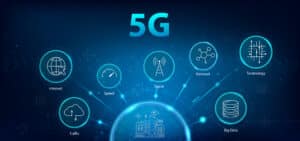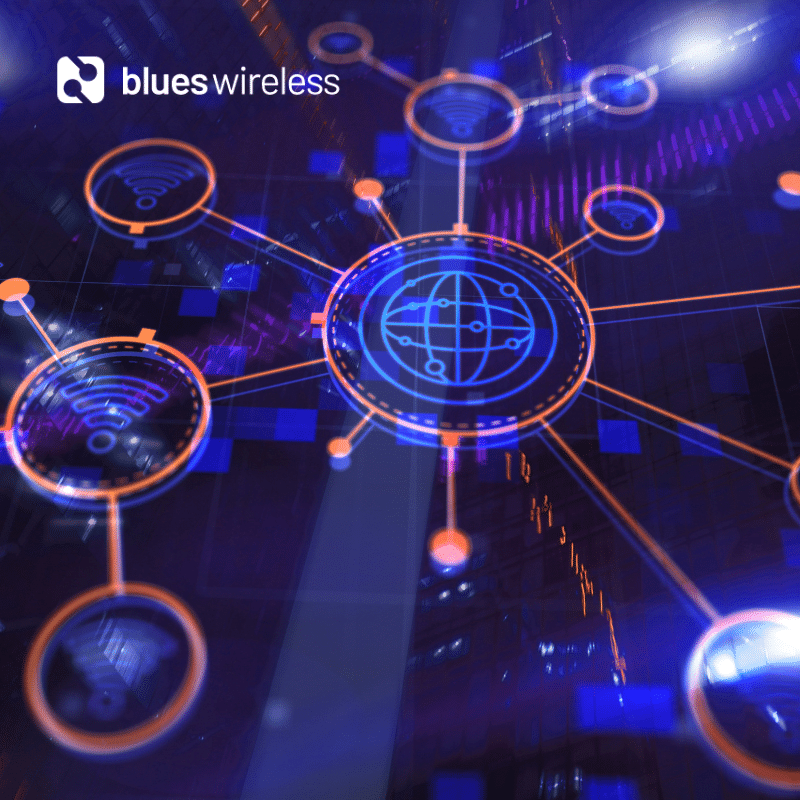Technology has the ability to change the way the world works, lives, learns, and adapts. As technology has been developed to advance the human experience in these areas, devices and apps have begun requiring connectivity and communication between multiple systems, providers, and companies. Mobile World Congress (MWC) is an event for people across the wireless communications industry to collaborate and share knowledge to continue the advancements in wireless connectivity. The theme for MWC Las Vegas is Connectivity Unleashed – an event theme that explores:
- The potential of 5G Connect.
- The evolution of CloudNet.
- The Internet of Everything.
- How Tech Horizon will transform connectivity through collaboration.

I would like to share a few of my thoughts about each of these relative to IoT and connected devices. The world of connected devices has been my focus since 2003, and I am committed to helping others innovate, manage connectivity transitions, and turn their technology into a business advantage.
I will be in Las Vegas for MWC Sept 28-30th, and I would love to open up a conversation around device connectivity prior to and during the conference. Please feel free to start the conversation by connecting with me on LinkedIn.
About MWC
MWC Las Vegas is centered around connectivity and mobile innovation. It brings industry professionals and more than 200 expert speakers together to discuss digitization efforts, groundbreaking new ideas, and human-machine interaction.
It’s an excellent environment to explore the latest advancements in technology and network with innovators. MWC includes:
- Thought leadership.
- Exhibition floor.
- Professional networking.
Connectivity Unleashed Examines the Potential of 5G Connect

The progression to 5G connectivity reminds me that cellular technology moves on and is not driven by IoT. Having spent many years involved with semiconductors, I see an analogy between cellular evolution and the constant movement to smaller and smaller process geometries for semiconductors.
Each semiconductor generation requires a massive investment of capital and resources, so they are driven by high-value products, such as processors and memory. On the other hand, if IoT is to grow to 40 billion devices by 2025 as some project, it will be primarily due to high-volume, lower-cost applications. However, it is unlikely that many of the use cases today (or even five years from today), will require the extremely low latency and massive bandwidth made possible by 5G. LTE Cat-1 and Cat-M are likely to be more widely deployed than NB-IoT because of global availability, capabilities (especially mobility), and ease of use.
While it is sure to be some time before 5G becomes the go-to option for IoT connectivity, IoT veterans understand how challenging and costly it is to deal with sunsets – 2G/3G to LTE is still fresh in our minds – so it is not too early to start thinking about the LTE to 5G transition.
As we move to this impressive new generation of cellular capabilities, keep in mind that connectivity is in perpetual evolution. I would suggest you build your IoT connectivity solutions in a way that isolates you from, and removes dependence on, the underlying industry technology.
The Evolution of CloudNet
Confession time: I have no idea what CloudNet even means. Through a quick Google search, I found there is an entire IEEE (Institute of Electrical and Electronics Engineers) conference later this year: “CloudNet 2022”. Here is their high-level description of the event:
Cloud networking has emerged as a promising direction for cost‐efficient, reliable service and data delivery across wide-area backbones and data-center fabrics. The prominent penetration of virtualization technologies into computing and communication infrastructure has led to continuous innovation, with new network protocols, software platforms, and artificial intelligence-based techniques for their orchestration.
Quite the mouthful, no doubt. But in my mind, I just think it means that there are very blurred lines. Whether edge, connectivity, cloud, or data center, everything must be connected and communicating to leverage and optimize all the resources. Here’s an example: While traditionally you had “dumb” sensors on the edge gathering data and sending it en masse back to an application (generally cloud-hosted), it is becoming more common to put more intelligence at the edge. This reduces latency, connectivity costs, and perhaps power consumption.

The takeaway for me, relative to IoT, is that it’s all about increasing capabilities while reducing complexity. Focusing on data plans and managing connectivity, for instance, should not be required to deploy edge intelligence. The value has always been in the actionable data.
Moving to a consumption-based model will scale much better with this evolution to cloud networking. If you are still working with AT commands and proprietary protocols, you’re increasingly becoming the minority.
Internet of Everything
I suppose this is an intentional emphasis on “Everything” vs. “Things” as found in the original definition of IoT. Or, perhaps it is just to create another acronym to confuse us all (IoE?). In my world, it just emphasizes the fact that there is a huge universe of things to be connected. And that means working at a scale we don’t fully appreciate.
This level of scale means the value, data collection needs, power consumption, and sources of objects and products being connected will vary dramatically. That makes it imperative to deploy connectivity solutions that provide flexibility on cost, data rates, and power, while making sure security is natively built in (and considers the attack vectors known and perhaps unknown).

Additionally, being able to control how the data is shared and published is going to be critical, as those managing these products will have varying technical capabilities, regulatory structures, and reporting needs, so natively connecting securely to multiple cloud platforms such as AWS, Snowflake, Azure, Datacake, and others, will allow you to visualize, utilize, and monetize the data in the most optimal way without compromising security.
How Tech Horizon Will Transform Connectivity Through Collaboration
This likely means different things to different people, but in IoT I am seeing this play out every day. With so many diverse devices connecting, the pool of data is exponentially increasing. The many partnerships emerging in IoT are centered around improving tangible benefits.
I engage with customers frequently who admit that early on they don’t know what they will do with all the information, though they fully expect it will be valuable. I understand this, but begin to have concerns if they have not developed at least one use case that will justify launching their IoT solution with projected ROI.
In order to provide a positive ROI, you either need a larger return or a smaller investment – pretty straightforward. But there are two important components to consider beyond the basic calculation that help you more accurately assess ROI:
- Time: Shorter time to market
- Risk: Direct financial and indirect project risks
In IoT, there are many components that inherently add risk to your product. Any time you’re dealing with hardware you are at the mercy of the supply chain, for instance. There are also hurdles to get over that can add months to your projected time to market, such as device certification. If you can identify a connectivity solution that requires a smaller investment, and provides a shorter time to market with lower risk, ultimately the ROI calculation and the probability of success of the project are greatly improved.

Final Thoughts on MWC
I am always excited to see the new products that are announced around MWC and hear what is happening with cellular connectivity. At the same time, I am reminded that the real-world uses of IoT need to be built upon affordable, secure, and open connectivity solutions. If you are designing a connected product, you might already know what I have found to be true for more than 15 years: It almost always takes much longer than expected to launch an IoT project.
I would counsel you to consider looking for an option that insulates you from technology sunsets, is billed on a consumption basis, uses a very open protocol such as JSON, and is developed by a team who have the experience of building massive cloud architectures such as Lotus Notes or Microsoft Azure. You get all of those boxes checked with Blues Wireless, which was founded to remove the complexity from IoT connectivity. Learn more about the origin of Blues Wireless in this post by Founder and CEO, Ray Ozzie.

